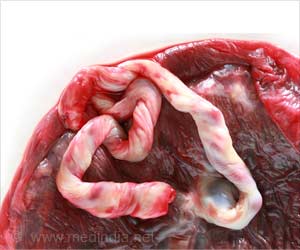A new test developed by scientists has the potential to help physicians identify patients with the most lethal forms of triple-negative breast cancer.

"We were able to detect bad guys hiding among the good guys," said study author Marsha Rosner, PhD, professor in the Ben May Department for Cancer Research at the University of Chicago. "When we applied our approach to clusters of patients sorted by the existing tests, we could spot exceptions."
"If you are a physician caring for patients who have been told they have a good prognosis-but they don''t-you want to know that right away," she said. "We think we have found a way to provide that information."
The test is not currently available for clinical use.
Patients diagnosed with triple-negative breast cancer face a difficult battle. These tend to be aggressive cancers with a poor prognosis. They lack three primary components-the estrogen receptor, the progesterone receptor and a protein called HER2-that are the targets of effective therapies with few side effects.
Triple-negative cancers represent 14 to 20 percent of all breast cancers. They often recur after treatment, spread to the brain and lung, and develop resistance to standard chemotherapies. They occur more often in younger women, African-American women, Hispanic/Latina women and women who have BRCA1 mutations.
Advertisement
The researchers mapped out a series of testable genetic signals, involving about 30 genes, and correlated the combination of signals with long-term outcomes in about 1,600 breast cancer patients. They found that variations in the BPMS could predict prognosis for a wide array of patients, especially those with advanced or triple-negative disease.
Advertisement
The test was particularly informative for patients with triple-negative disease, where it could estimate the odds of a cancer spreading to other sites. It was also able to further stratify previously-screened patients, such as those in the poor prognosis subgroup analyzed by MammaPrint and the high-recurrence subgroup analyzed by OncotypeDX.
"Our test adds information to the existing FDA-approved tests," Rosner said. "The BPMS is a significant predictive variable even after adjustment for all available clinical and prognostic factors."
The predictive ability of the BPMS suggests that the genes it focuses on play a significant role in the progression of advanced breast cancers. "This gives us ideas about what''s driving metastasis in these cancers," Rosner said. "The next step is to try to pinpoint the key genes and develop drugs that can disrupt that process."
An approved drug, hemin (sold as Panhematin), used to treat a blood disorder called porphyria, may suppress the BPMS pathway, the researchers speculate.
The National Institutes of Health funded this study. The work was spearheaded by Unjin Lee and Casey Frankenberger in the laboratories of John Reinitz and Marsha Rosner at the University of Chicago. Additional authors include Jieun Yun and Elena Bevilacqua of the University of Chicago, and Carlos Caldas, Suet-Feung Chin and Oscar Rueda of the University of Cambridge, UK.
Source-Newswise















